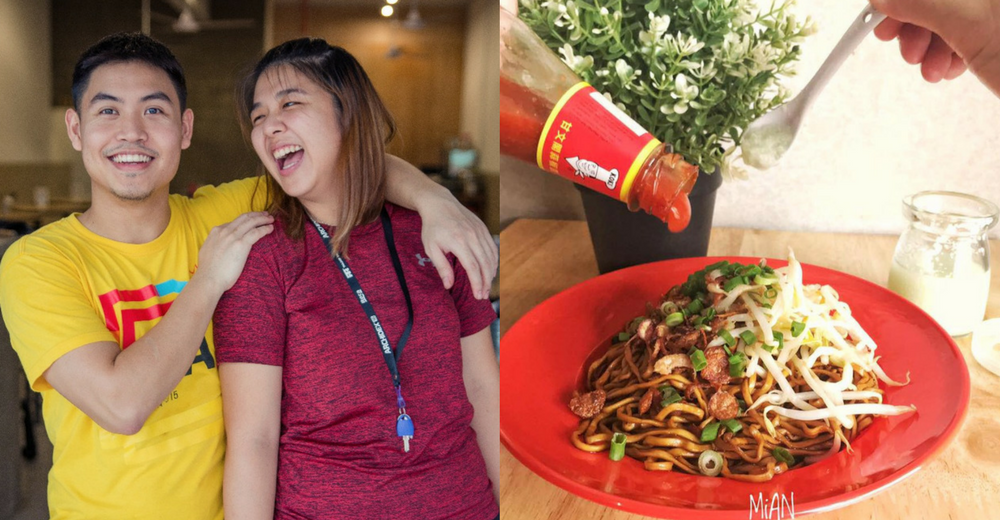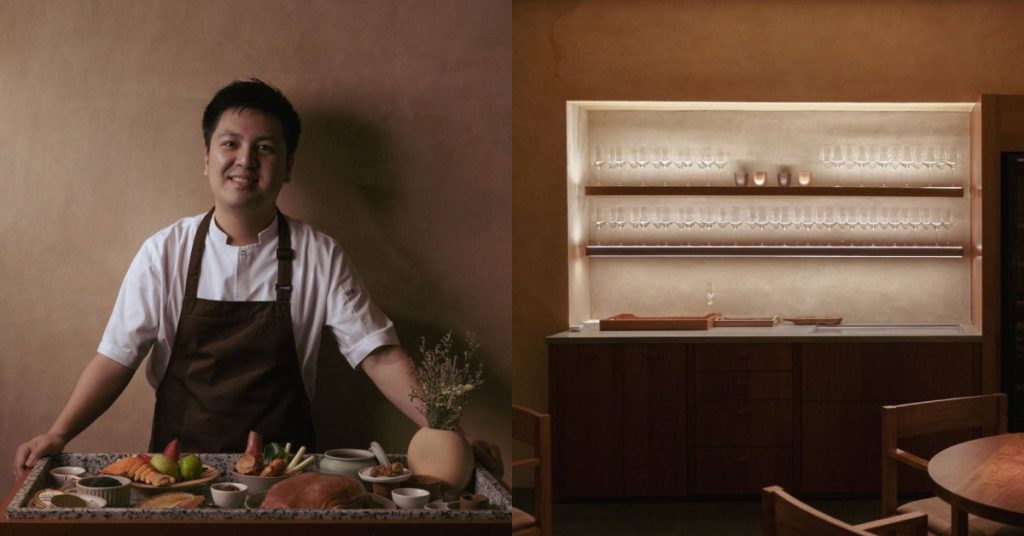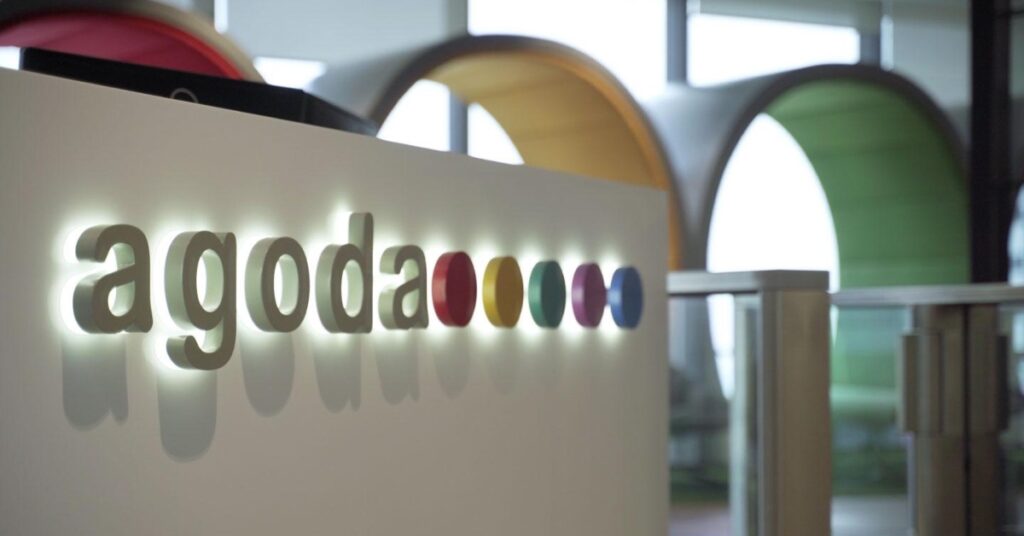When we asked Guo Yi, co-founder of MIAN restaurant why he decided to pursue authentic Sitiawan dishes as a business, he joked “I guess the burning desire from the passion to build a restaurant overwhelmed me!”.
He never thought of himself as a man for food, describing his mindset towards food as “something that you do because you have to”.
But he has fond memories of growing up with his Hokchew grandparents in Sitiawan—one of them of eating his grand-uncle’s kampua noodles from the shop just across the road from his grandparents’ house.
Perhaps more relatably, Guo Yi just didn’t want to have to drive back to Sitiawan for kampua every time he had a craving for it.
“Kampua is something that I must, must eat when I’m back home in Sitiawan,” Guo Yi declared.
“So just a few years back, we thought ‘Why don’t we try to expose these noodles to the people down here in Petaling Jaya specifically, and hopefully spread it to the KL region?’ People don’t know about our food, because we’re such a small clan of this dialect.”
“For the kampua in Sitiawan, they use a dark sauce. This is something that I grew up eating when I was really young, because both of my parents were working, and they didn’t have the time or capacity to take care of me. So they sent me to my grandmother’s place in Sitiawan.”
“My grand-uncle has been selling these noodles since he was young. He’s been doing this all his life,” said Guo Yi.
“I believe that his noodle shop was the best in town. About 5–10 years back, he stopped selling noodles because he was getting old. His wife was getting sick too, and he was taking care of his grandkids. So we went to consult him about the restaurant.”
His grand-uncle taught them everything he knew about the noodles—the texture, timing, looks.
But Guo Yi paid particularly close attention to the sauce and the way that he cooked the meats.
“But there are things we didn’t agree on. For example, the type of meats that he used. In Sitiawan, the palette is pale. They don’t like to eat heavy stuff so when you eat, their dishes are a little bit blander compared to PJ or KL’s palettes. So we knew that we couldn’t be selling that kind of taste that he did Sitiawan.”
MIAN’s black kampua is from Sitiawan, while the recipe for their white kampua came from Fuzhou, China instead. On first glance, most people would associate the white kampua with Sibu-style Kampua.

“A lot of people get confused, and this is something we need to clarify as well. ” said Guo Yi. “We didn’t want to sell that because Sibu kampua is pretty popular, a lot of people are selling it.
Guo Yi and Jacy, his wife, got the white kampua recipe from an aunt who used to live in Fuzhou, who learnt the recipe from a local noodlemaker.
When their aunt heard that Guo Yi wanted to sell kampua noodles, she invited the couple over to taste the original Fuzhou kampua noodles.
“To be honest, the first time I had it, I didn’t like it at all. The taste was so off.”
“It had peanuts in it, grounded peanuts, cooked in oil. But Jacy liked it from the start. She said that it tastes different and people will like it.”
“We said okay, why don’t we try selling it? But I was a bit skeptical. I’ll always stick to my black kampua, I won’t go anywhere else.”
At MIAN, all of their food is made fresh daily, and any unused extras will be tossed out by the end of the day.
That does make customer projection a little hard to gauge sometimes, though.
“We maintain a controlled quantity to sell daily because we don’t recycle food. This means we can’t sell stuff tomorrow if we didn’t finish selling it today. That’s why there are times we do sell out quite fast if the crowd was unexpectedly large.”

Before MIAN, Guo Yi was a regular face in MaGIC, affiliated with the accelerator program.
While they were still in the “research and development” part of the MIAN, Guo Yi needed non-Hokchew tastebuds to sample their kampua.
“We did a lot of research, and a lot of tasting sessions as well. A lot of these startup people that I was working with were all our guinea pigs. We cook for them, they taste, they gave feedback. And those were crucial, even for any business.”
Among those new ideas incorporated after these sessions was also the idea of using fattier pork based on Klang Valley-ites appreciation for char siew, as opposed to Guo Yi’s uncle’s suggestions.
Of course, MaGIC did more than just provide guinea pigs.
Guo Yi used the know-how that he gained from MaGIC to benefit the business side of the restaurant, and meanwhile interior and graphic designer Jacy took care of everything from logo & menu, to kitchen flow, tiles and all the relevant details.
“The problem was, being an account manager and rep—you’re exposed to this kind of stuff, but you’re not doing anything about it.”
“What you’re doing is that you’re taking in all of this information, and all you can do is pass it over to startups if they’re not there to attend the talk. So I guess in some way, it’s good now,” said Guo Yi.
The pair eventually settled that branding themselves as a good ol’ kopitiam would just make them, well, any other kopitiam.
“We could set ourselves a little bit differently and price it a little bit higher, targeting the slightly higher income people around the area. So we thought: why don’t we try to brand ourselves a little bit better? Have an image, rather than no image at all.”
“We came up with the idea of MIAN, instead of something like ‘Restoran Ting Guo Yi Kampua Noodles’. Simple, not too fancy.”
Taking a a leaf out of lessons that he learnt from the expert speakers in MaGIC events, team MIAN settled on prices that are slightly higher than an average kopitiam, but not too much that it would be unreasonable.
Of course, it still needed to cover costs. Team MIAN prices according to the amount of noodles and type of meat that you’re getting out of the deal, like pork belly.
“Our clan is really small. We’re a dying breed,” said Guo Yi.
“In fact, think my wife is quite lucky to have married me because in some way, I think you can’t find a lot of Fuzhou people anymore,” he said with a chuckle.
“We wanted to in some way, introduce what Fuzhou food is here. It’s not really like a goal, but—oh man, this is going to sound cliché—but a dream. I really want to make kampua mainstream. I want people to think of kampua like you think of wantan mee. Or if you think of bak kut teh, or any local food. It’s something that I really want. A household name.”
And to him in this case, imitation would actually be the greatest form of flattery.
He does note that it’ll be a bit hard for imitators to actually copy the recipes that he got from his very authentic sources. But he’d be flattered nonetheless.
Also Read: We Ask Malaysian Bosses What Perks Would Employees Expect from A Modern Workplace
Feature Image Credit: MIAN














